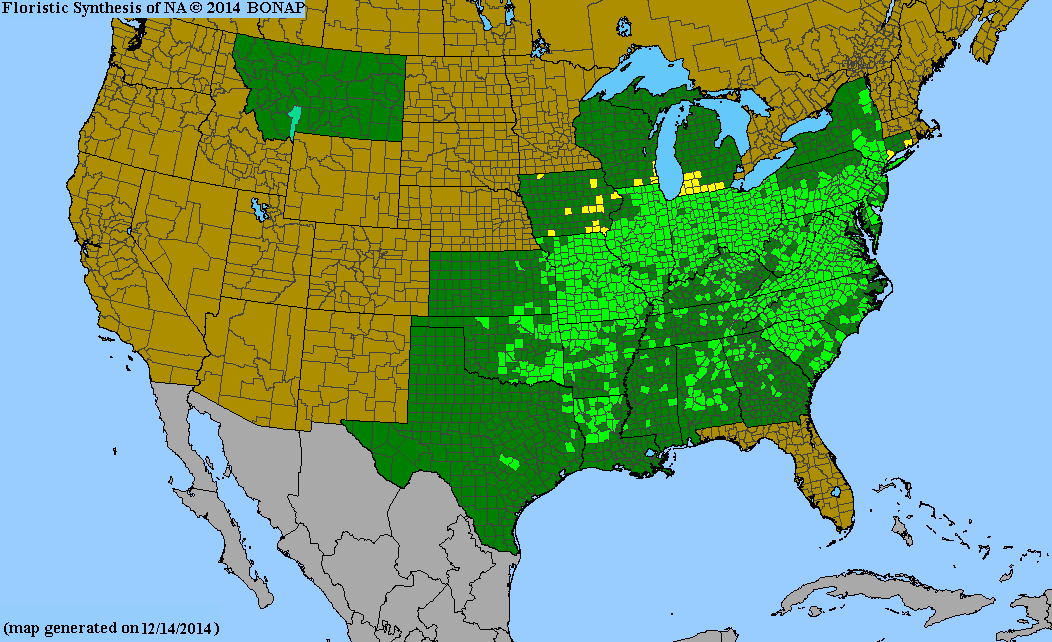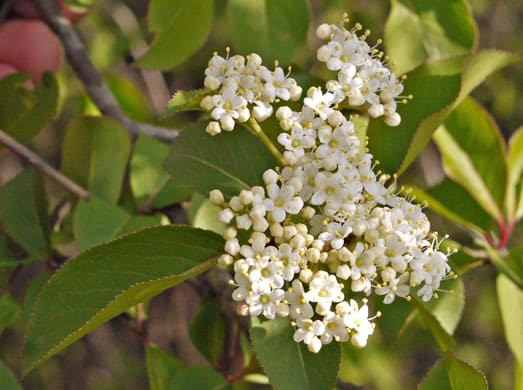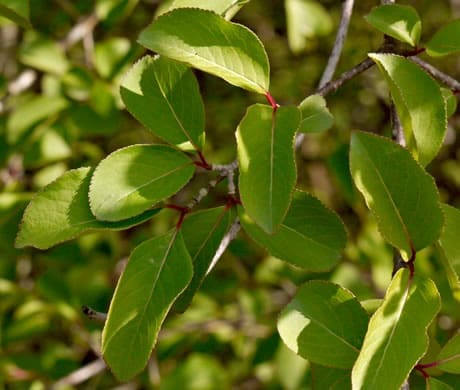Viburnaceae
blackhaw viburnum
Viburnum prunifolium
Other Common Names
plum leaf viburnum
Plant Type
Small Tree/Large Shrub (10-25 ft)
Life Cycle
Perennial
Typical Size
12-15 ft. tall
6-12 ft. wide
Tolerant of
Drought
Inolerant of
Poorly Drained Soil
Propagation
By seed
Plant Propagation Notes
Collect seed once fruit has darkened and store at 41 degrees with the pulp still on.
Plant Planting Notes
Provide 12′ spacing.
Plants/Diseases
No significant disease or pest issues.
Wildlife Benefits
Nectar/pollen source for pollinating insects, Host plant for butterfly larvae, Fruit/seeds for birds
Leaves
The species name “prunifolium” refers to the leaf shape of this Viburnum resembling Prunus, or cherry, leaves. Opposite.
Flowers
Usually white, but sometimes pink, fragrant flowers with 4-5 petals in clusters. Fragrant.
Fruit
Drupes that transition from green/yellow to red/pink to blue/black at maturity.
Bark
Younger twigs are smooth and gray-brown, maturing to gray-black with rough, square bark plates.
Toxicity
No known toxicity.
Edibility
Fruit is edible and can be eaten raw or used in jams and preserves.

USDA Hardiness Zones
3, 4, 5, 6, 7, 8, 9
Light Exposure
Full Sun, Part Sun/Shade
Soil Moisture
Medium, Moist
Soil Drainage
Well-drained
Soil pH
Acidic (less than 6.0), Neutral (6.0-8.0), Basic (greater than 8.0)
Native in South Carolina?
Yes
Plant Native Habitat
Bottomland and riparian forests, stream banks, mesic upland forests.
Global Conservation Status (NatureServe)
Secure (G5)
Federal Conservation Status (USFWS)
Not Listed
Distribution Notes
Common throughout SC


